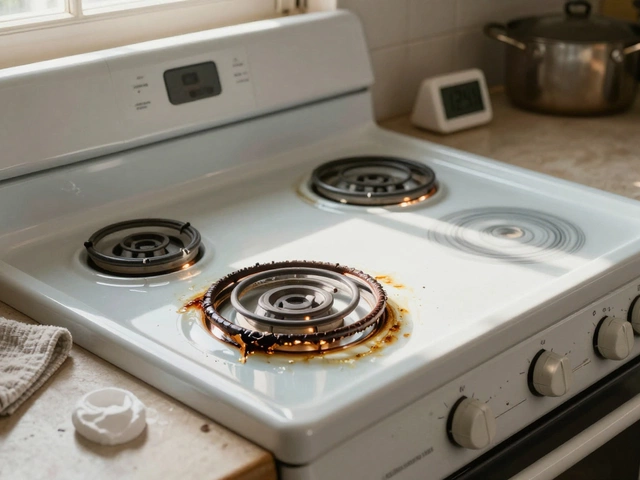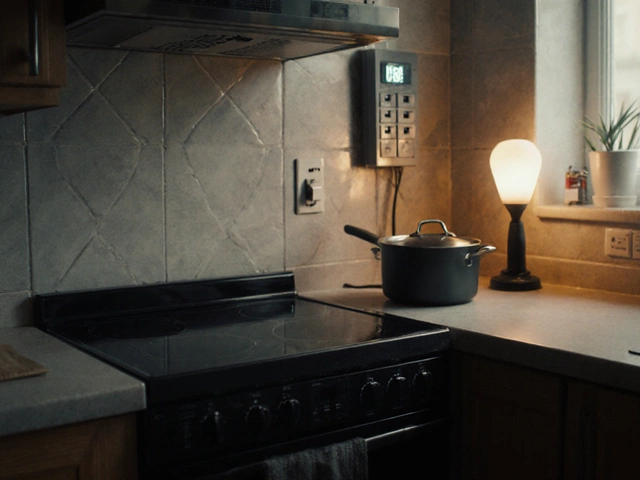Can a Boiler Really Last 50 Years? Lifespan, Tips & Facts Explained
July 11 2025Heating Element Signs You Should Never Ignore
When your oven, dryer or water heater starts acting up, the heating element is often the culprit. Recognising the warning signs early can save you time, money and a cold dinner. Below are the most common clues that the element is on its way out.
Unusual Noises and Smells
If you hear a buzzing, humming or popping sound when you turn on an appliance, the element may be cracking or coating is burning off. A metallic smell or a faint burnt plastic odor is another red flag. These symptoms mean the element is overheating and could fail completely if you keep using it.
Inconsistent or No Heat
One of the easiest signs is when the appliance doesn’t get hot enough, or the heat stops halfway through a cycle. A dryer that tumbles but stays warm, or an oven that only reaches a low temperature, usually points to a failing element. In water heaters, lukewarm water from the hot tap while the cold tap works fine is a classic indicator.
Another tell‑tale sign is a cycling problem – the element turns on, off, then on again quickly. That can happen when the element’s metal is developing hot spots that trigger the safety thermostat.
Visible Damage
Open the back of the appliance (after unplugging it) and check the element for obvious signs: black spots, rust, broken coils or a broken ceramic coating. Any visible breakage means the element needs replacement.
In ovens, the glowing coil may appear dimmer or have a dark line running through it. In dryers, the metal coil can get a grey layer of lint or dust that blocks heat.
Higher Energy Bills
When an element works harder to produce the same amount of heat, it draws more electricity. If you notice your electricity bill creeping up without a change in usage, a failing heating element could be the hidden cost.
Dryers that run longer cycles, ovens that stay on for extra minutes, or water heaters that struggle to keep water hot will all push up energy consumption.
Safety Switch Trips
Many appliances have thermal cut‑outs that shut the unit down if the element gets too hot. If you repeatedly get an error code or the appliance simply powers off mid‑cycle, the safety switch is likely reacting to a faulty element.
Don’t ignore these shutdowns – they protect you from fire, but they also tell you something’s wrong inside.
What to Do When You Spot a Sign
First, unplug the appliance and give it a quick visual inspection. If you see obvious damage, call a qualified gas engineer or appliance technician. For minor issues like heavy lint build‑up, clean the element carefully with a soft brush and a damp cloth.
Never attempt to replace a heating element yourself unless the appliance’s manual explicitly says it’s safe. Gas‑powered appliances, especially boilers and water heaters, require certified professionals to meet safety regulations.
When you schedule a service, mention the specific signs you observed. A clear description helps the engineer diagnose the problem faster and decide whether a repair or replacement makes sense.
Preventing Future Heating Element Trouble
Regular maintenance is the best defense. Clean dryer vents and oven filters monthly, descale water heaters annually, and have a professional check your boiler’s element during its yearly service.
Keeping the area around the element free of grease, dust and debris also extends its life. A little routine care now can keep your appliances heating efficiently for years.
By staying alert to these heating element signs, you’ll catch problems before they turn into emergency repairs, keep your energy bills in check, and enjoy reliable heat whenever you need it.
 18 Jul
18 Jul
How to Tell If Your Oven Element Is Broken: Signs, Symptoms, and Fixes
Wondering if your oven element is broken? Learn the clear signs, causes, and easy tests to spot and fix a faulty oven element. Get your oven back in action.
Read More...



